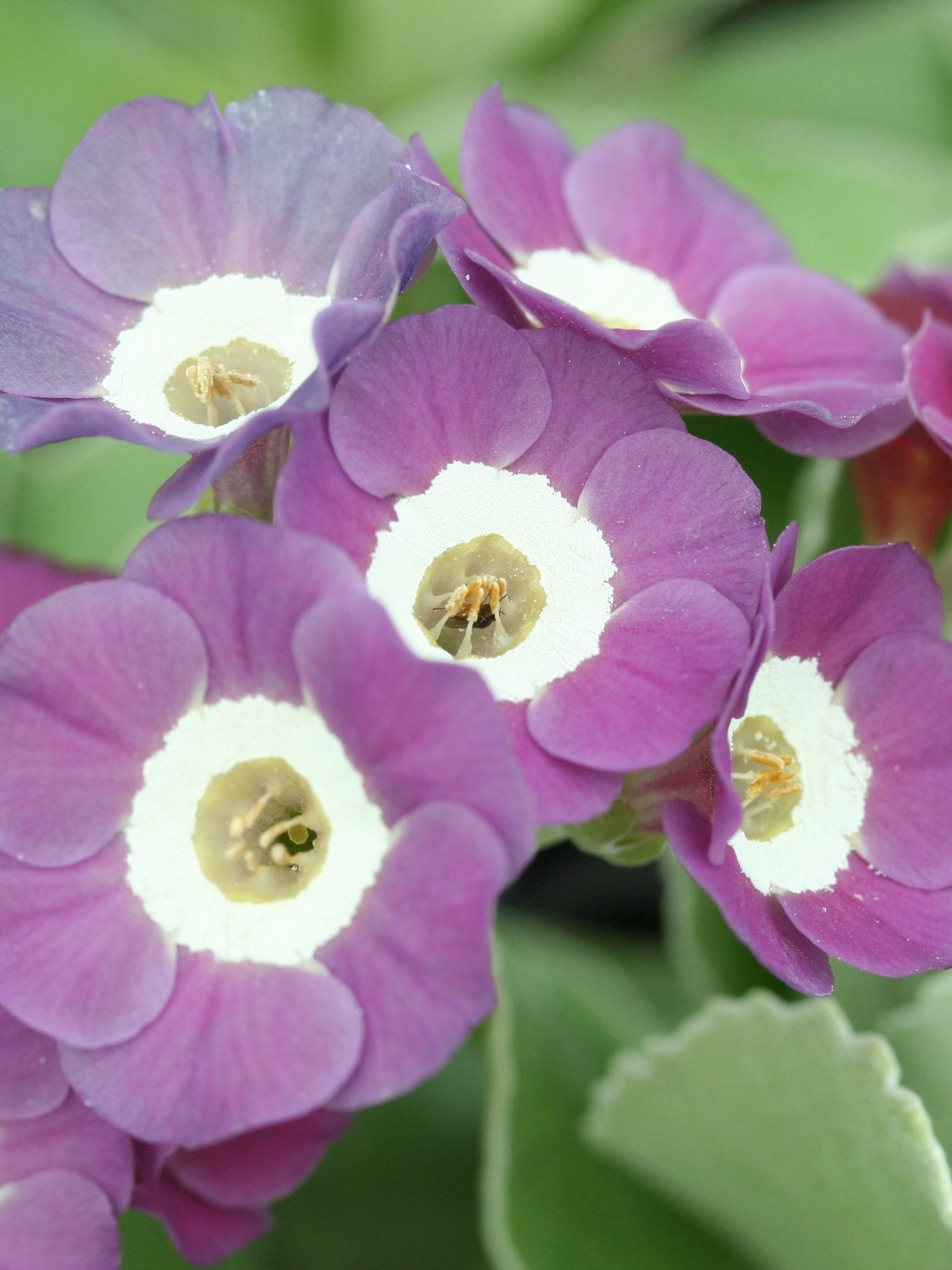
Late spring - after the flowers have finished we re-pot into fresh compost*. As the buds appear we begin to give a small amount of tomato fertiliser, until flowering. Spring - we start to water the plants little by little as the weather begins to warm up, keeping them just moist. Here is a brief summary of our own Show auricula year : © Colin Humphrey, National Auricula and Primula Society Kent group. Often displayed in 'theatres' or shelving units in the spring they will make lovely show and can be moved to a less prominent and shady place in the summer months. They don't mind the cold, only excessive wet and the rain on the flowers can wash the farina away. it is often usual to keep them in pots either in a well ventilated and shaded alpine house, or in pots with some sort of protection outdoors in the winter for example an outdoor veranda, or on a north-facing window ledge. To safeguard the spectacular beauty of the Show auriculas (Selfs, Fancies and Edges). They are hardy alpine plants that are used to being under a layer of snow in the winter.Īlpine and double auriculas are also not very fussy plants and can be grown as above.

We do not recommend covering the plants in winter. We would suggest dividing them every couple of years and enriching the soil with well-rotted manure or compost when you replant them.

Garden auricula full#
For the best flowers, give a low dose of tomato feed every week as soon as you see new buds, until full flowering. Try to remove dead leaves which fall on your plants. It also seems to deter slugs and the dreaded vine weevil. If your soil is heavy, add some small gravel and a gravel mulch around the plant will help to avoid rot if the winter is wet. The main thing is to make sure the soil is well-drained and that they are in a semi-shady spot.Īuriculas growing in an old ceramic sink with saxifraga. They grow well in a normal soil, either in pots, troughs or in a well-drained border or rockery. Pale green leaves and red flowers make this a winner in the garden.Our auriculas are raised to be hardy and to survive without the special cossetting that is sometimes required by show auriculas. pubescens is often considered a border auricula. From: Peninsula primulasīred in 1979 this unusually toned gold-centred alpine variety is equally good in the garden or in pots for showing. From: Drointon Nurseriesīred in 1952 the flowers of this richly coloured show variety is complemented by heavily dusted foliage. Reliable clusters of flowers on string stems. Vigorous alpine variety bred in 1979 and a good perennial. Very popular show variety producing striking flowers with mealy centre on 20cm (8in) stems in May. Old border variety reliably producing clusters of scented, wavy edged flowers on 22.5cm (9in) stems. Under glass they’re prone to greenfly and also attacks by vine weevil grubs.įor more information contact the National Auricula and Primula Society. They need to be kept damp, but not wet over winter, gradually increasing the amount of water as they flush with new growth and the flower buds appear.

When growing them in pots, clay or plastic, use a multi-purpose compost with added John Innes and add more grit or Perlite to further improve drainage. The show varieties are best grown in pots in a cold greenhouse to protect the meal or farina on their leaves and especially the flowers, which is soon washed off by rain.

They hate hot sun and dry soil and will scorch, or even die, if becoming seriously droughted. The border and alpine forms are robust enough for use in the general garden, where they’ll grow in moist, but well-drained soil in semi-shade. Auricula shows became popular and formal societies were formed.Īuriculas are generally split into border, alpine, show, double and striped varieties. The auricula as we know it was brought into cultivation at the end of the 18th century, grown by ordinary folk as botanical treasures. Hundreds of hybrids have been created by crossing it with closely-related species P. The wild species have small, rounded or scalloped leaves, sometimes covered in a creamy meal and heads of circular, five-petalled flowers, often with a white eye. These tufted, evergreen primulas originally come from the mountains of Europe, where they grow among limestone rocks. Auriculas are among the most treasured of our spring flowers.


 0 kommentar(er)
0 kommentar(er)
